Great Barrier Reef survival key to indigenous identity
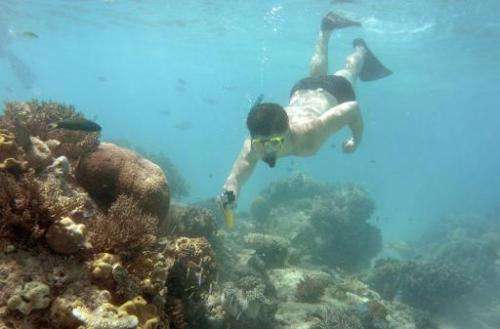
To the world, the Great Barrier Reef is a natural wonder and vast underwater kingdom, boasting some of the rarest animals and plants. To Aboriginal Australian Gavin Singleton, it is home.
The 26-year-old's family history—off the reef to the far northeast coast of the continent—goes back thousands of years.
He has recently started to work with authorities to help protect the world's largest coral reef system as it faces a tide of threats to its very existence, led by climate change.
His enthusiasm about being involved in conservation efforts is simple. While the possible loss of the reef would be a national tragedy for Australia, it is personal for Singleton.
"Most of our traditions, our customs, our language are from the sea, so losing the reef would impact our identity," he told AFP on board a boat at the reef off the northern city of Cairns.
"We were here prior to the formation of the reef and we still hold stories that have been passed down through generations—of how the sea rose and flooded the area, the 'great flood'."
Singleton's family is part of the Yirrganydji people, whose traditional lands lie between Cairns to Port Douglas, which is about 65 kilometres (40 miles) north.
Following the end of the ice age about 10,000 years ago, the sea waters rose and flooded the continental shelf as well as some of the lands of the Yirrganydji and other indigenous people, forming the modern reef in the area.
Like the Yirrganydji, more than 70 Aboriginal and Torres Strait Islander groups share connections with the World Heritage-listed site, some of which go back 60,000 years.
Immigrants and visitors have also built bonds with the 2,300-kilometre-long reef.
Two million tourists travel to the region each year, while one million people live in its catchment area and depend on the reef for their livelihoods or recreational activities.
The reef contributes AUS$5.4 billion (US$4.8 billion) annually to the Australian economy through tourism, fishing, and scientific research, while supporting 67,000 jobs, according to government data.
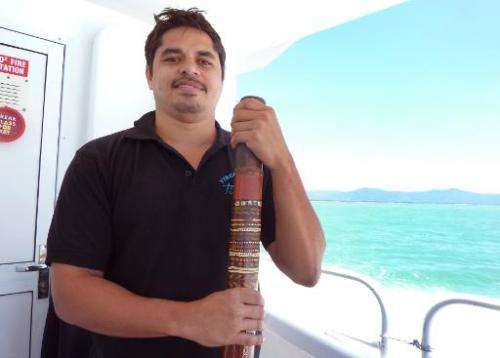
Reef outlook 'poor'
What has caught the attention of UNESCO over the past year, however, has been the deteriorating health of Earth's largest living structure.
According to an Australian government report in August, the outlook for the reef is "poor", with climate change posing the most serious threat to the extensive coral reef ecosystem.
Other threats include poor water quality from land-based run-offs, coastal developments and fishing, the report by the independent but government-funded Great Barrier Reef Marine Park Authority (GBRMPA) said.
It came two months after UNESCO—which placed the reef on its World Heritage list in 1981—deferred listing it as "in danger". The UN body instead gave Australia until February 1, 2015 to submit a report on what it was doing to better protect the biodiverse site.
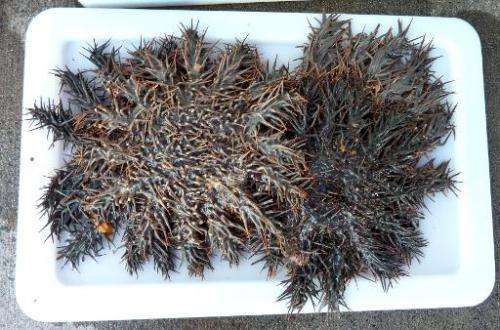
A draft 35-year plan released by the federal and Queensland governments in mid-September to tackle some of the concerns suggested greater coordination between authorities as well as the banning of further port developments and dredging in some areas.
"We've listened and responded to the world on the reef," Environment Minister Greg Hunt said Thursday, adding: "Prime Minister (Tony) Abbott wants to make the reef recovery his environmental legacy.
Conservationists said that while some aspects of the plan were positive, the government was not doing enough.
A recent battle involving conservationists saw the Queensland government reconsider dumping dredging waste from the Abbot Point port development, which is part of a major India-backed mine expansion, into reef waters.
GBRMPA's chairman Russell Reichelt, who has spent almost half a century diving in and studying the reef, told AFP that while ports did pose environmental risks, they were localised.
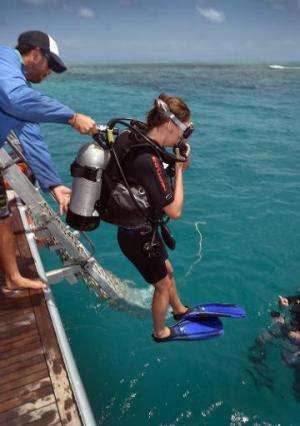
"By far the bigger impact is the 100 years of land clearing and agriculture and use of pesticides," he said, adding that the spread of nitrogen and fine sediments was exacerbated by floods carrying them to the edge of the reef.
Coral predators
The run-off has also been cited by scientists as likely responsible for boosting the numbers of the native predatory coral-feeding crown of thorns starfish to plague-like levels—another key threat to the reef.
The starfish are so numerous that "it is absolutely impossible" to estimate how many there were feeding on the coral, said Steve Moon, who works on a programme to reduce their numbers.
"One starfish can lay up to 60 million eggs per year... and you are looking at a 70 to 80 percent fertilisation rate, so it's scary stuff," Moon said.
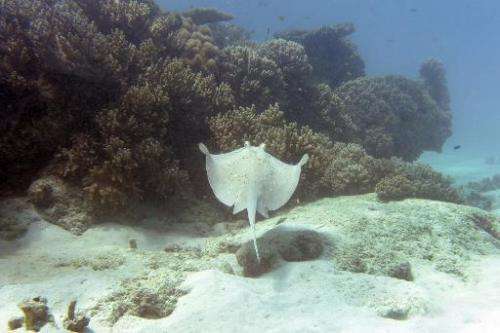
Despite the ongoing challenges, Reichelt is upbeat about the reef's long-term survival, adding that Australia has been "very honest and frank" about the pressures the site was under and what needs to be done to help it recover.
Singleton is hopeful more indigenous people will be allowed to work directly on the water as rangers and to manage traditional areas in their "sea country".
"When that ever happens, I think there will be effective management of the reef, because we'll be here to stay and basically our eye on the reef will be constant," he said.
"Traditional owner groups will have their hearts and souls in it."
© 2014 AFP





















